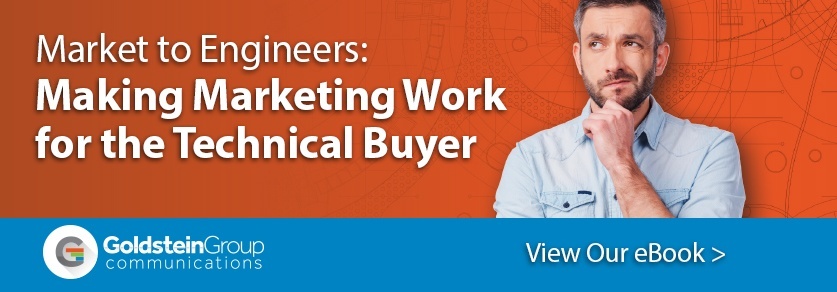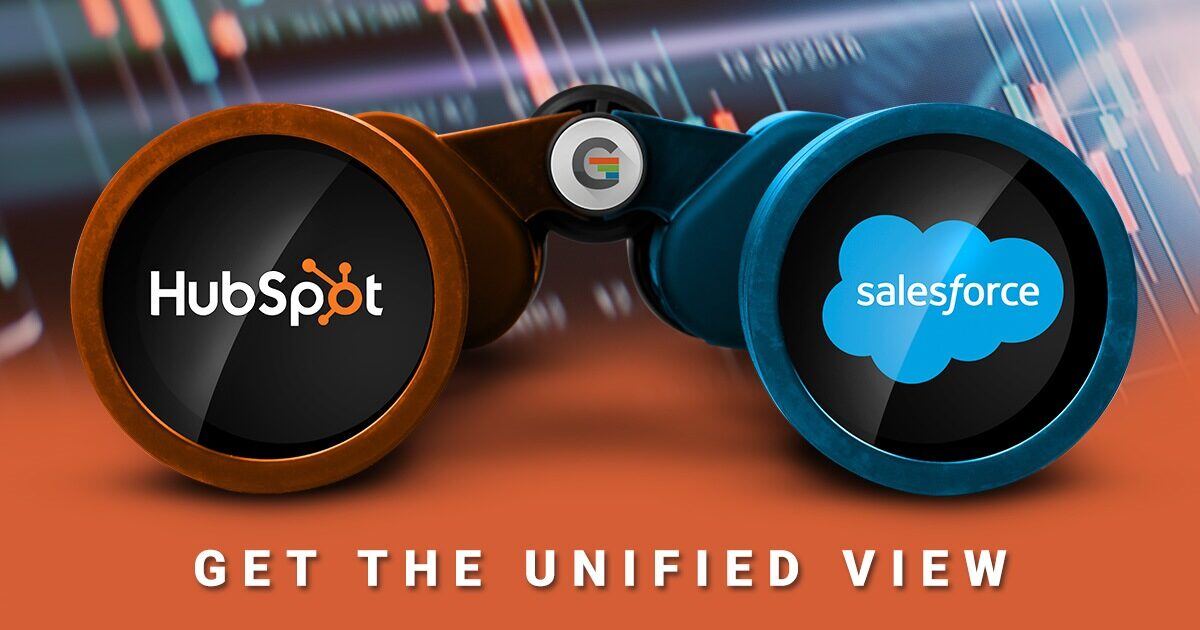Sales Teams Seem to Struggle Selling Technical Products?

 Much of our work involves helping manufacturers prepare their new products for launch. We’ll spend quite a bit of time crafting a message for a product, and then building a lead generation campaign to support it.
Much of our work involves helping manufacturers prepare their new products for launch. We’ll spend quite a bit of time crafting a message for a product, and then building a lead generation campaign to support it.
Most of that time is spent with the marketing team. And, as we see in so many cases, because marketing at times works separately from salespeople, there’s not a very smooth hand-off from marketing to sales when the product is launched. The campaign materials and collateral are thrown over the transom with a hearty “have at it, sales team!”
Particularly with engineered products, that’s not going to see much success. You can wait for your sales team to find the best targets on their own. Or you can do a good job of marketing to engineers and help them prepare for fastest success.
Rather than wonder why your sales team is struggling to sell to their engineer prospects, your sales channel - whether it’s internal or external - needs a playbook for every new product you launch. This is particularly critical for external reps or distributors, but even your internal regional managers need a head start when going out to sell.
Every salesperson asks the same questions when presented with a new product:
- Who’s likely to buy, in the shortest amount of time, so I can make the most commission?
Those salespeople are so focused, aren’t they? Marketers need to be just as focused when turning them loose to sell, especially to a busy engineering audience.
Just as marketers need a playbook to figure out how to message and position against competitors, often that information isn’t packaged and shared with the sales team. It’s particularly important to document this, since product training created upon launch in January doesn’t do much for the salesperson hired in May, or the rep organization who experiences turnover on their staff. You need a Sales Pillar to ensure your extended team gains traction in the shortest amount of time.
The questions posed for a Sales Pillar are designed to shorten that learning curve and point them exactly where they need to go. Much of this can be taken from initial marketing work, or if your company has a defined Product Launch or Stage Gate process, from the research/planning documents presented to management when the product was being considered for a green light.
First, publish a Sales Guide for the product that answers these Sales Pillar Planning Questions:
- What is the sales strategy? Is it up-selling existing customers, market penetration to generate new customers, or to penetrate new geography or vertical markets?
- What’s the sales outcome I want from the first call – is it to get a PO, request a meeting, request a quote, request samples?
- What is the TRUE, UNIQUE value proposition for the product? Sometimes, products are just to keep pace with a competitor who got the jump on you. That’s OK, but your salespeople need to know that. But most cases, you really will have a unique competitive advantage. We don’t see that articulated well, at times. Salespeople tend to write value prop statements that again fail the “me-too” test, where your competitor’s product can be inserted into your value statement and still hold true. If it’s going to be unique and differentiated, it has to be different.
- The corollary to a true and unique value prop is one that matters. Your value prop could be tied to the fact that your product comes in 8 colors. But if your customer doesn’t really need that or care about it, they’re not willing to pay for it and switch from a competitor to you. We’ve asked earlier in company messaging what triggers someone to buy, and what would get them to switch. If you can’t answer these questions and articulate it in a clear and concise value prop, your salespeople will struggle selling.
- Competitive Assessment -- What features and specs beat the competitor? Are there any weaknesses the product has that your salespeople need to sell around? Your “Best in the World” homework comes into play here as well – what is your product Best at providing, and does that tie to a customer requirement (or is it just a “nice to have?”) What barriers will they have to overcome in terms of product, performance, positioning, company awareness, regional differences or distribution channel? Are you more or less expensive, and how do you account for that in your sales pitch? Give your salespeople a strong “battle card” that summarizes this comparative performance, so they don’t have to pull data sheets and build it themselves.
- What are the qualifying questions? Every product has a “sweet spot,” so the qualifying questions will tell your sales team exactly who to spend time chasing. Your ideal customer may be someone in the medical devices industry who is looking for a mid-volume injection molder in the southern United States, so qualifying questions will seek to uncover those prospects. Certainly, you may find prospects who are not in the medical industry, and you may find opportunities for low-volume parts production. But those prospects aren’t in your sweet spot, meaning they won’t find you as compelling, or they won’t find your pricing in line with what they need, or they won’t feel you’re worth switching from their current provider. Qualifying questions identify who will close the fastest, with the highest margins.
- What personas are you targeting? Is this a sale for the business buyer, the technical buyer, the purchasing manager? Who’s dominant? What C-Suite involvement will be involved in making the sale?
- Who are the targets? Your salespeople need to be pointed to the sweet spot: what geography, titles, industry, size of company? Is this a product best applied for new plant construction examples, or will those in charge of ongoing plant operations or maintenance be involved? Is this going to sell best for high growth tech industries or mature industries looking to trim costs? Will you sell fastest to OEM manufacturers, subsystem suppliers or engineering firm specifiers? Who are your primary and secondary influencers?
- What are the most compelling target applications? Remember, you need to define the opportunity in terms of “have to have” applications. Don’t send your salespeople chasing “nice to haves,” because they’ll waste their time chasing harder-to-close opportunities rather than low-hanging fruit.
- Give your salespeople market context for the product, target market and applications. Is the industry growing or declining? Are there government regulations or other certifications driving or limiting the product potential? Is this tied to industry trends your customers will have in mind, or does it conflict with trends your salespeople will have to overcome to get the order?
- What “proof points” do you have to share with customers, in terms of case histories, government certifications, standards compliance, prior product expertise, industry knowledge or specializations?
Answers to these basic selling cookbook questions will form a powerful selling tool and Sales Guide that will dramatically prepare them to sell right from the start. Your Sales Pillar kit should also include:
- Sales PowerPoint that contains many of these messages. You don’t want your salespeople spending time making presentations. They should be in front of customers, and everything you do as marketers to take these burdens off their plate will enhance their face time – and ensure the presentation is on message.
- Sales collateral – blogs, videos, white papers, links to web pages, articles, app notes, brochures, data sheets, selector guides and configurators, webinars. Put all these in a single place either online or on a USB thumb drive to give them ALL the tools they’ll need to sell.
- Case histories – few things are more persuasive to a customer than references examples of others using the product, especially if they’re in the same industry. Seeing competitors or “like” companies using a product, service or technology creates both a sense of assurance (few people want to be first, in truth) as well as a sense of urgency and pressure to keep up with competitors.







